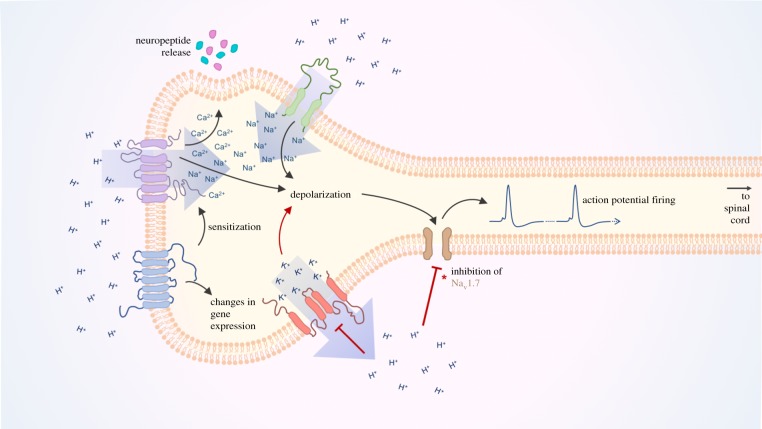Figure 3.
Proton-sensation at the peripheral terminal of a typical nociceptor. Following localized acidosis, the increased extracellular concentration of protons is sensed by several receptors which act in concert to increase neuronal excitability and release mediators which may sensitize other neurons. Increased extracellular proton concentration induces the activation of proton-sensitive depolarizing channels (ASICs and TRPs) causing cation influx and membrane depolarization. Simultaneously, proton-induced inhibition of K2P channels reduces constitutive K+ efflux further facilitating membrane depolarization. Activation of PS-GPCRs can drive changes in gene expression and coordinate phosphorylation and sensitization of TRP channels. Altogether, nociceptor membrane depolarization activates NaV subunits resulting in generation of action potentials that transmit nociceptive signals to the spinal cord. (*Amino acid variations in NaV1.7 of some species renders the channel hypersensitive to proton-block resulting in an absence of proton-induced nociception.)

